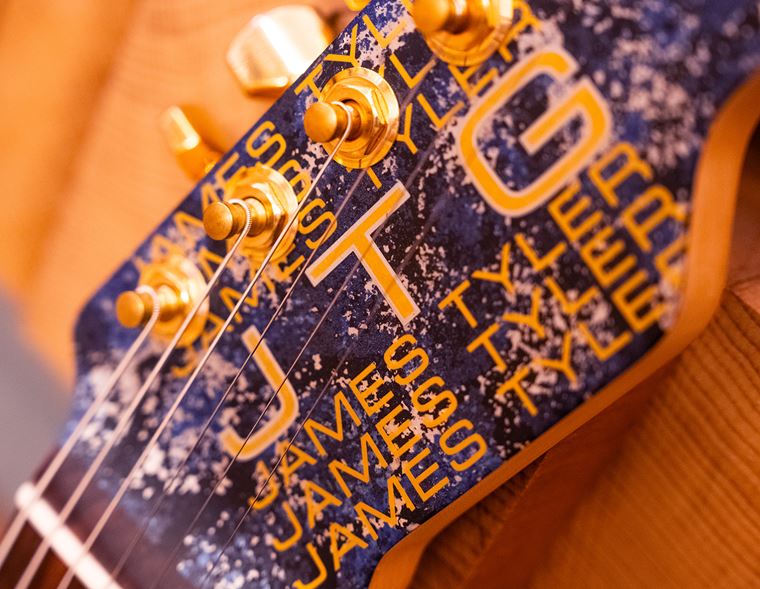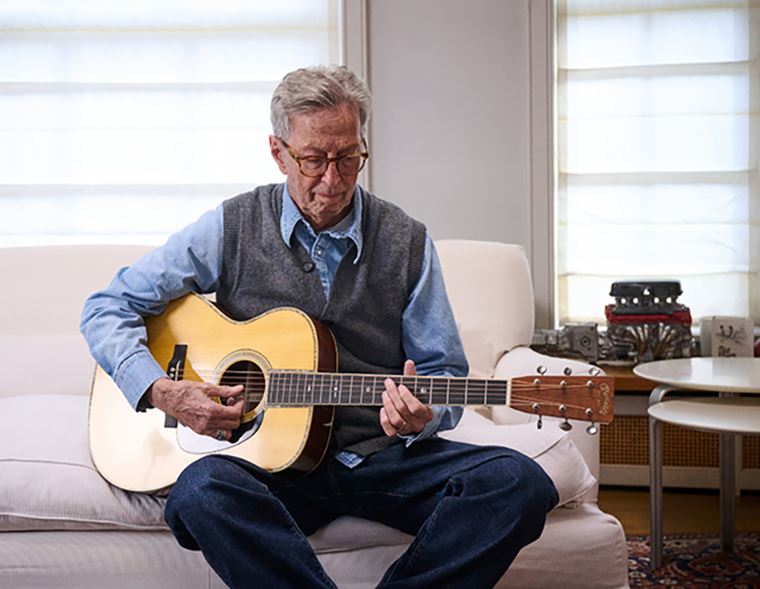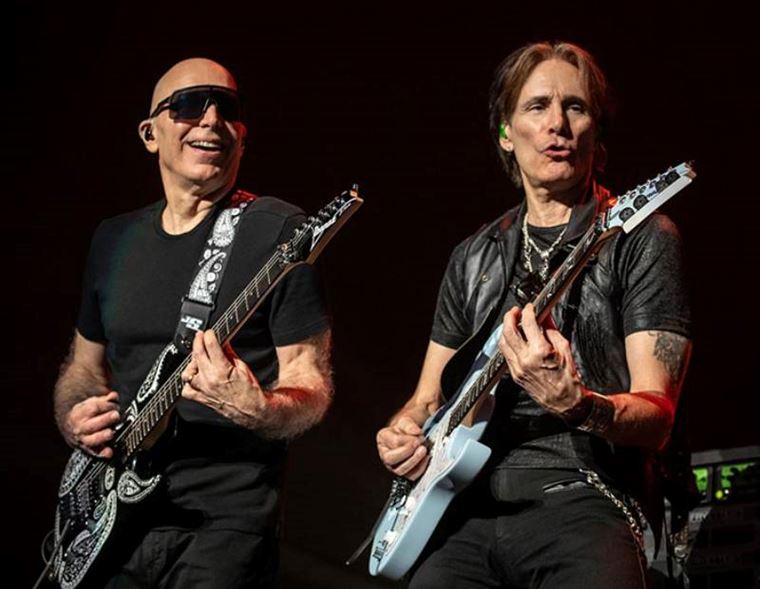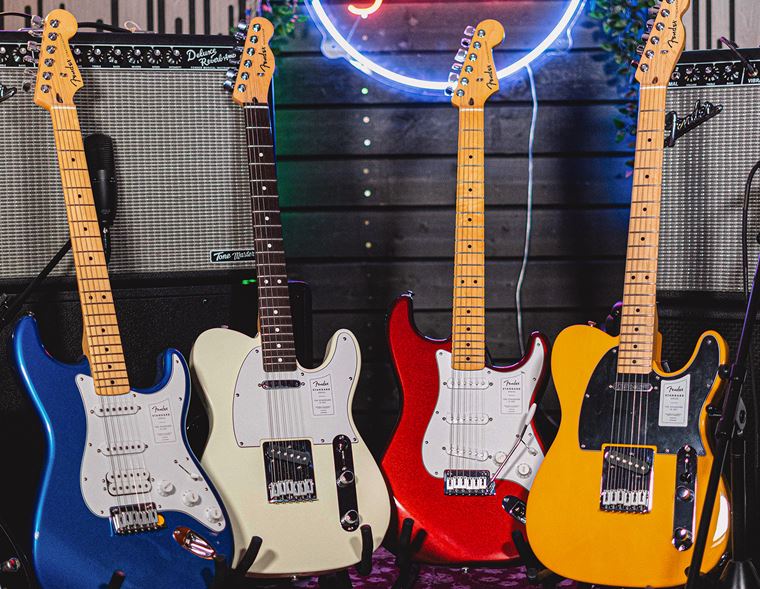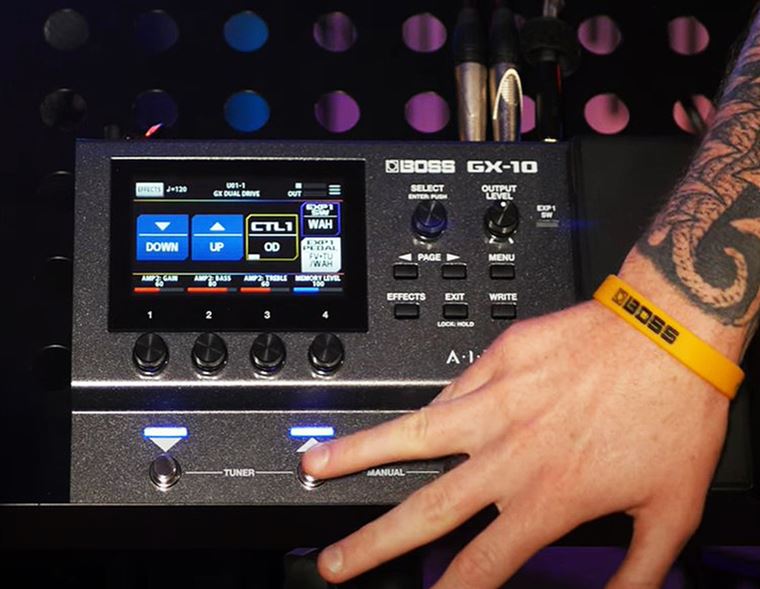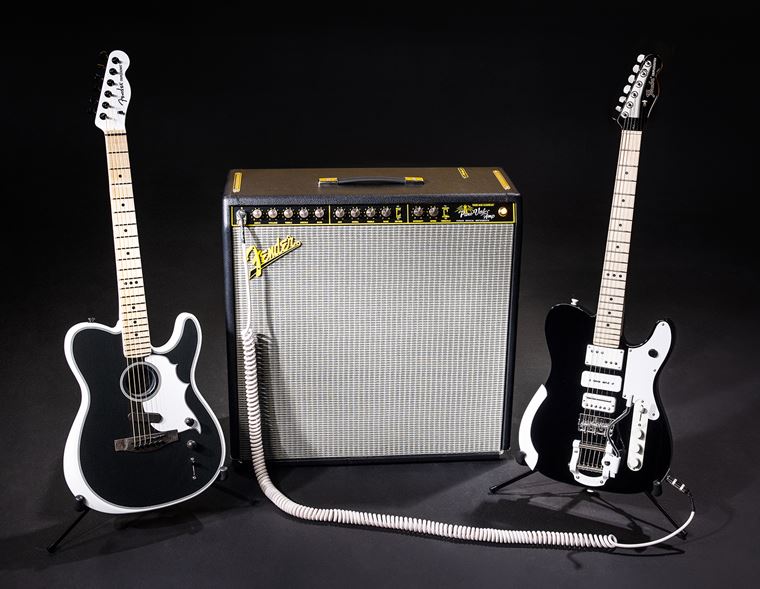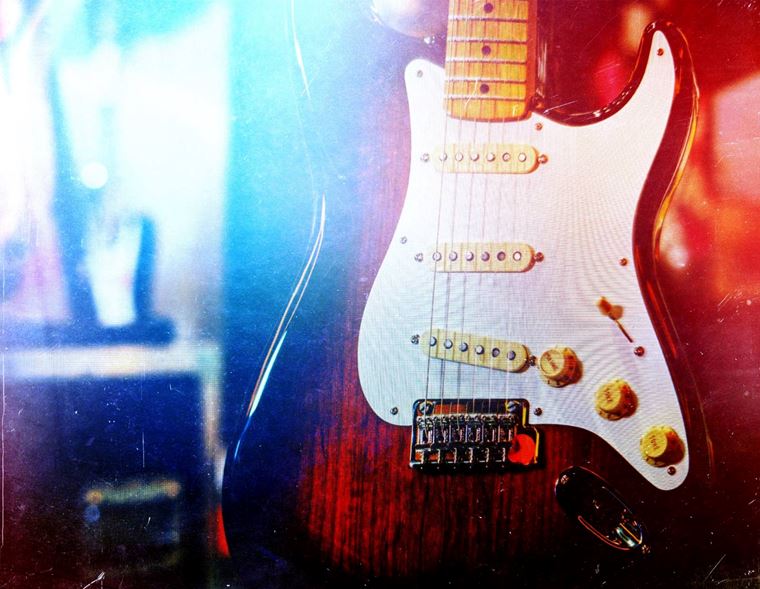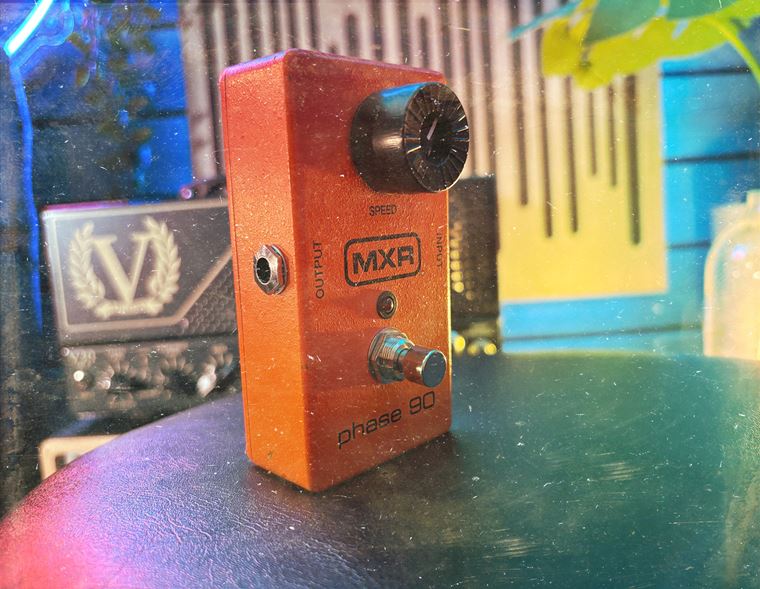A Brief History of Epiphone Guitars
Published on 24 May 2021
Today, I would like you to embark on a little journey with me as I delve into the brief history of Epiphone Guitars.
Contents
- The Beginning of Epiphone
- Epiphone Vs Gibson: The Epic Rivalry
- Epiphone During Word War II and the Gibson Takeover
- The Epiphone Casino and the Beatles
- The USA Epiphone Casino of 2021
The Beginning of Epiphone
Epiphone is over 150 years old. Yes! They predate many of the heritage guitar brands we all know, such as Gibson (founded in 1894) and Gretsch (1883). The company actually started in Izmir, Turkey, which was known back then as Smyrna in the Ottoman Empire. This was in 1873, just 8 years after the end of the American Civil War (and right in the middle of the ‘Wild West’, timewise!), just for a little context!
The founder was a Greek instrument maker named Anastasios Stathopoulo, whose early products included violins and various varieties of Mediterranean lute such as the Oud and the Laouto. His business was also a repair shop, and he trained his sons - Epaminondas and Orpheus - in the family arts.
The Stathopoulo family emigrated to the US in 1903, landing as most did in New York. Anastasios continued to produce instruments: his first patent was for a bowl-back mandolin in the classic Italian style, which he called the ‘Orpheum Lyra’ after his youngest boy. His premises has been recorded as being in Manhattan’s Lower East Side, which was at the time home to a large Greek community.
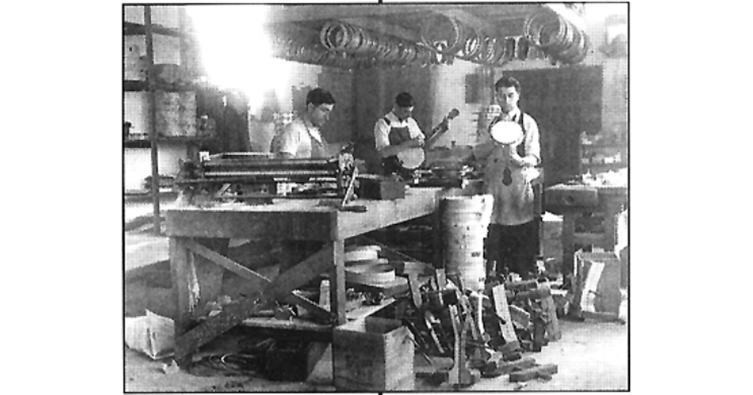
Anastasios passed away in 1915, leaving Epaminondas, known as Epi, in charge. Epi was a designer and ideas man as well as a shrewd businessman. As the roaring twenties marched in, Epi designed and patented a line of super-popular banjos which helped make the company’s name. After becoming the controlling owner (his mother died in 1923), Epi changed the name of the company from House of Stathopoulo to Epiphone, bringing his nickname in together with the Greek word for sound.
Thus, the company’s name literally means ‘Epi’s sound’.
Production moved to Long Island as business prospered. The real fun began in 1928, when Epiphone made their first guitar.
Epiphone Vs Gibson: The Epic Rivalry
It’s a fun thing to know about the rivalry between Epiphone and their competitor, Gibson. Back then, the two companies were very similar: American made, hollow body instruments of classic beauty, made for the Golden Age of Jazz.
Epi was moving into his prime. Known as ‘The Duke’ because of his effortless style and manner, Epi walked it like he talked it. Taking charge of the company at only 22 years old, this Greek immigrant college graduate was ready to push the family business into the stratosphere and do right to the memory of his father. After proving with his mandolin and banjo-making decisions that his finger was resolutely on the pulse, he banked on guitars supplanting banjos in the public eye, a hunch that was right on the money.
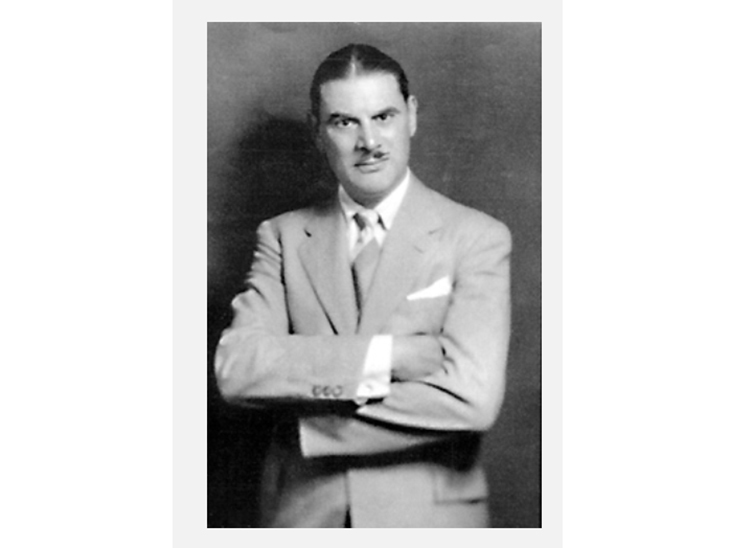
Epiphone’s range of ‘Masterbilt’ (the letter ‘u’ was always mysteriously dropped from the title) f-hole archtop acoustics were introduced in 1931, in direct competition to Gibson’s popular L-5. Even the name ‘Masterbilt’ was a cheeky nod to Gibson’s Mastertone and Master Model ranges. Pointedly, Epiphone’s Masterbilt guitars were significantly – and deliberately – more decorative and ornate than Gibson’s.
Epi had thrown down the gauntlet. But it didn’t end there!
For instance, in 1934, Gibson released the Super 400, which at the time was the largest-bodied archtop available. Epiphone’s response? To create the Emperor, a similarly grandiose guitar design but with an all-important body size that was one inch wider than the Gibson! Slightly more comedic additions to Epiphone’s roster sheets show up Epi’s sense of humour: Epiphones’ response to Gibson’s truss rod was a “thrust rod”, for example! Epiphone also experimented in the 30s with a seven-string guitar, which lots of history books tend to forget!
Epiphone During Word War II and the Gibson Takeover
Epiphone’s comedy rivalry with Gibson continued: in 1939, they both released competing versions of the Hawaiian Steel guitar, for example. This type of thing lasted up until the dreadful dawn of World War II.
The Americans joined the fight in 1941, but Epi was already ill by then. He sadly died of leukaemia in 1943, in the middle of the war. He was only 50 years old. As with most instrument manufacturers at that time, the War Machine ground enterprise to a halt. Nobody was thinking about making guitars.
Epi’s brothers lacked his vision, charm and verve. They tried to continue the company but misguided moves like shifting the factory to Philadelphia were met with such a severely negative opinion from the staff, many of them quit and began their own business: Guild Guitars.
Thus, when Gibson Ted McCarty called in 1957 to enquire about buying Epiphone’s upright bass section of business, the Stathopoulos brothers offered him everything.
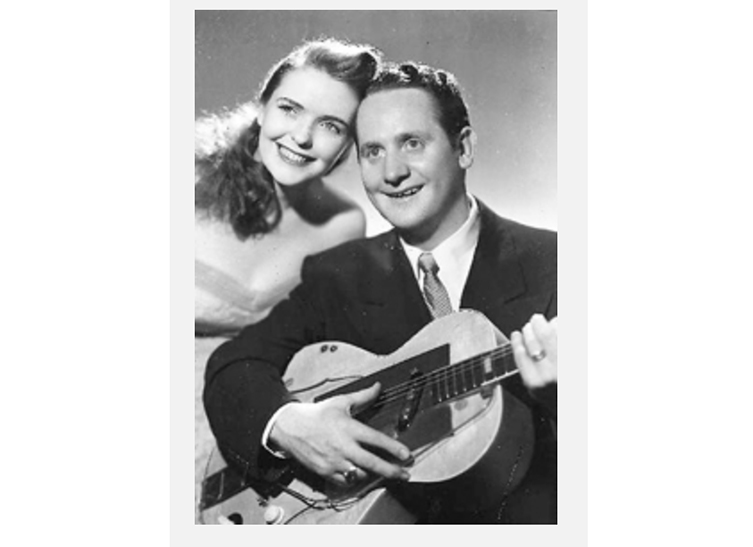
Les Paul himself pops up now in the story, showing his shrewd head for business:
"I'm the guy that talked Gibson into buying Epiphone. I told Mr. Maurice Berlin (the founder of Chicago Musical Instruments who owned Gibson),'you know Epiphone is sitting there and it has one hell of a name and why don't you just make a deal and get that name. And make a different line of guitars so they are separate from the Gibson line and you can go creating other ideas...' And Mr. Berlin did just that and he purchased the name and everything else."
“I’m the guy that talked Gibson into buying Epiphone” – Les Paul
So, that’s the whistle-stop version of the Epiphone story up until the late 50s, and it’s still quite a tale! History would dictate that Gibson ultimately won that famous rivalry in the end. But what would’ve happened had Epi not died at such a young age? What triumphs might we have seen? Could Epiphone have become the brand that Clapton and Page played in the late 60s, changing the world as they did so? Would Gibson have become a mere footnote in history?
Who knows! What we do know is that Epiphone have endured: through two world wars, multiple continents and the most colourful century in history. We need to remember Epaminondas ‘Epi’ Stathopoulo and his dream. That dream continues into the Sixties, and brings us the story of the Casino...
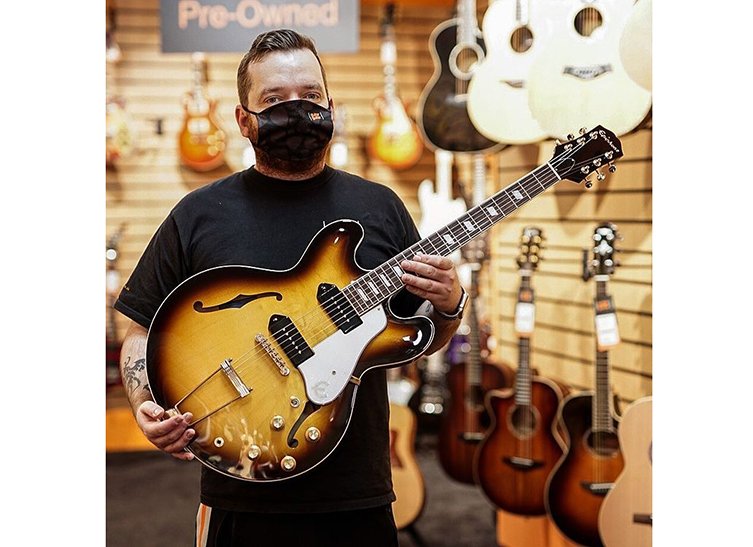
The Epiphone Casino and the Beatles
How many people instantly think ‘John Lennon’ when they see an Epiphone Casino? He was undoubtedly the most visible player of this semi acoustic, though poor Macca may get huffy on the matter since he had his Casino first! Yes, McCartney bought his in 1964 and his bandmates John and George followed suit a year later. Now, we’re already ahead of ourselves, so let’s go back three years to 1961...
The original Epiphone Casinos were made in Gibson’s factory in Kalamazoo, Michigan. Starting in 1961, the model was built right beside Gibson’s own equivalent, the ES-330. Both models are almost identical, apart from the headstock shape (and brand logo, of course) and the tailpiece. The dimensions were the same, the laminated construction was the same and they both used P90 pickups.
The 60s Casino is the defining model, without question. Over the years, there have been various versions on this famous recipe, but none have strayed particularly far from the blueprint established in 1961. Indeed, the most notable point was the move to Far Eastern manufacture. Most of the Casinos around today are from overseas manufacture, but Gibson very recently decided to begin the production of USA-made Casinos, to bring them truly back home again.
Since the days of the Beatles, we’ve seen Casinos in the hands of players like Gary Clark Jr, Paul Weller, Thom Yorke and The Edge, to name but a few! Even from that short list, it’s obvious that the instrument is versatile, of guitarists from such diverse bands as Radiohead, The Beatles and U2 all choose it!
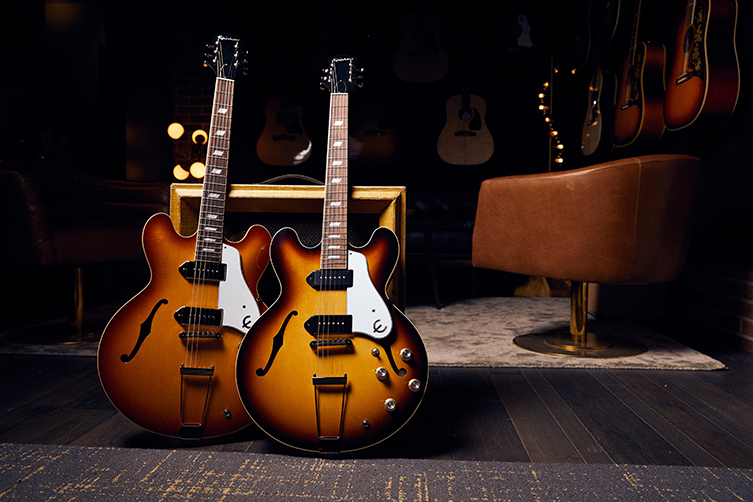
The USA Epiphone Casino of 2021
Now, the standard Chinese Epiphone Casino model will still be available of course, but this new all-American Casino is for those who want that extra level of authenticity and quality.
The thinline, fully hollow body is just as it always has been, and is made with laminated maple and poplar. The set mahogany neck joins the body at the 16th fret in proper Casino fashion, too. Certain models over the years have altered this neck join, but it’s a significant part of the Casino’s unique feel. Talking about feel, the fingerboard radius has been settled at 12” on this guitar. Again, variations of up to 14” have been recorded over the years, but the Gibson standard of 12” seems most appropriate for this guitar.
The two dogear P90 pickups are Gibson USA models, specially wound for the appropriate vintage tone. For a Casino, that means an appealingly snappy sound with a percussive brightness that easily explains the guitar’s popularity with rhythm players. In addition to the pickups, the electronics are hand-wired (just like the good ol’ days!) and quality Orange Drop capacitors have been used, continuing the professional standard of the rest of the spec. This is a serious tool for today’s retro-minded player.
Classic Heritage, USA Quality
These new USA-made Epiphones are a revelation. They feel fantastic, look perfect and sound exactly as you’d hope. If you’re a fan of the Casino, you already know you want one of these! If you’ve never tried one before, you don’t know what you’re missing!
The legacy of Epi lives on.


